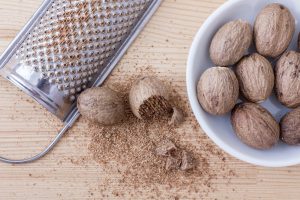According to the Centers for Disease Control and Prevention (CDC), 1 out of every 2,758 babies are born in the U.S. with the birth defect spina bifida. This condition, which develops in a fetus during pregnancy, affects the spine; it is usually identified at birth, although there are different types of spina bifida, one of which is sometimes not diagnosed until late childhood or adulthood, if ever. To better understand spina bifida during Spina Bifida Awareness Month, we will discuss the causes, different types, and what you can do to help reduce the risk of your baby developing it.
What Is Spina Bifida?

Spina bifida is a birth defect that affects the column of the spine, which does not form properly in the womb in babies with the condition. During the first month of pregnancy, a set of cells forms the neural tube, which is what later becomes the brain, the spinal cord, and the structures around it; spina bifida occurs when that neural tube doesn’t close all the way, leaving the backbone, which protects the spinal cord, not fully closed. This often leads to damage to the spinal cord and nerves, causing abnormalities of the spine, accompanied by physical and intellectual disabilities ranging from mild to severe.
Different Types of Spina Bifida
There are 4 different types of spina bifida, and symptoms will vary depending on the type:
- Myelomeningocele- This is the most serious type of spina bifida, in which a sac of fluid comes through an opening in the baby’s back. The spinal cord and surrounding nerves will push through the open bones in the spine and protrude, damaging the spinal cord and nerves. This causes moderate to severe disabilities, such as changes in brain structure, loss of feeling in the legs or feet, inability to move the legs, and bladder dysfunction.
- Meningocele- This occurs when the sac of spinal fluid pokes through the spine, but the spinal cord is not in the sac. Usually there is little to no nerve damage, and only minor disabilities and symptoms.
- Closed neural tube defects– This type occurs when the spine has malformations of fat, bone, or membranes. It causes weakness of the legs and trouble with bladder and bowel control.
- Spina Bifida Occulta- Also called “hidden” spina bifida, this is the mildest type. There is a small gap in the spine, but no opening on the back, which is why it is hard to diagnose at a birth or in childhood. It rarely causes disabilities or symptoms, and is often not discovered until late childhood or adulthood.
Causes & Prevention
Unfortunately, doctors and scientists do not know all the causes of spina bifida, but they do think that genetic, nutritional, and environmental factors all play a role. There are, though, ways that you can reduce the risk of spina bifida in your baby:
- Take 400 micrograms of folic acid everyday– Spina bifida develops in the first few weeks of pregnancy, so if you are considering getting pregnant, begin taking folic acid beforehand. This B vitamin is important for the development of a healthy fetus, and studies show that adding it to your diet can reduce the risk of having a child with a neural tube defect. In addition to taking supplements, you can eat foods high in folic acid, including dark green vegetables, egg yolks, and enriched breads, pastas, and grain products.
- Get your diabetes under control – If you are diabetic before you become pregnant, and if you are obese, you should try to lose weight before getting pregnant.
- Avoid overheating your body while pregnant
- Treat fevers immediately when pregnant
Diagnosis
Spina bifida is often diagnosed before birth with prenatal testing, but some cases go undetected until after birth. During pregnancy, there are multiple screenings that can be done to check for it:
- Maternal serum AFP screen– At 16-18 weeks of pregnancy, a sample of the mother’s blood is tested to measure how much AFP, or alpha-fetoprotein, a protein that unborn babies produce, has passed into the mother’s bloodstream from the baby. If there is a high level detected, that means the baby has spina bifida.

- Ultrasound– During the second trimester, an ultrasound can show pictures of how the baby is developing in the womb. It is accurate in diagnosing birth defects, and can be done during the first trimester, but is more accurate during the second trimester, from 18-22 weeks.
- Amniocentesis- The doctor will remove a sample of the amniotic fluid and test it for protein levels; higher than average levels of AFP indicate that the baby has spina bifida.
It is also possible to identify spina bifida after a baby is born: babies with this condition will usually have a hairy patch of skin or a dimple on their back. If doctors see this, they can use an image scan such as an X-ray to examine the baby’s spine.
Treatment
Treatment is different for each person with spina bifida, depending on the type they have. If it is determined that your fetus has developed the condition, you can opt to have prenatal surgery, in which your baby’s spinal cord will be sewn shut. You can also opt for postnatal surgery, in which the doctor will close the defect and minimize risk of infection within the first few days of life.
Depending on how severe the case of spina bifida is, your child might have to:
- Have surgery to improve alignment of their feet, legs, or spine
- Have surgery to drain fluid in the brain
- Use braces, a walker, crutches, or a wheelchair
- Do physical therapy to strengthen their legs
- Take rectal medications or enemas to have bowel movements
A child with myelomeningocele will have to have their kidneys monitored closely so that medications or surgeries do not result in kidney failure.
Spina bifida generally occurs within the first weeks of pregnancy, and while we still don’t know exactly what causes it, scientists are continuously researching and studying it to solve the mystery. This condition, depending on the type, can have severe symptoms that require surgery, constant testing, mobility assistance, and/or physical therapy, so if your child is living with spina bifida it’s very important that you have good health insurance to help pay for all of these medical expenses. EZ.insure will work with you to find an affordable plan that meets your medical needs, so you have one less thing to worry about while providing care to your child. To get free quotes on all available plans in your area, simply enter your zip code in the bar above, or to speak to an agent, call 888-350-1890. No obligation.



